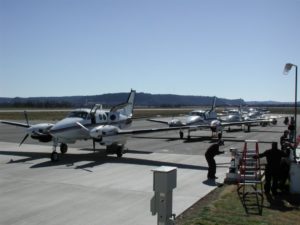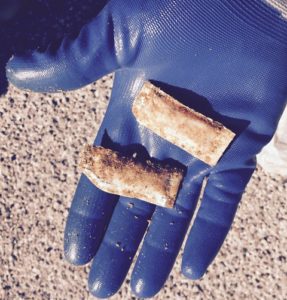Rabies in coyotes was reported only sporadically in Texas until 1988, at which time a rabies strain that had previously been confined to urban dogs established itself in the coyote population along the U.S./Mexico border. The Texas Department of State Health Services (TDSHS) data indicated that the domestic dog/coyote strain of rabies epizootic in South Texas was rapidly spreading northward. This resulted in increased rabies infections of domestic animals, the need for euthanasia or quarantine of exposed animals, the need for the post-exposure treatment of humans, and the loss of human life. From November 1988 through July 1, 1994 there were 459 reported cases of canine rabies for South Texas; 232 of those cases were found in coyotes, 199 involved domestic dogs and the remaining 28 cases were “spill over” of canine rabies into other domestic and wild species.
On February 23, 1994, Representative Kika de la Garza announced that USDA-APHIS had allocated $474,000 in emergency funds to help fight the outbreak of canine rabies in South Texas spread by coyotes. These funds allowed Texas Wildlife Services to join forces with the TDSHS and other county level agencies to assist in a cooperative effort through conducting specific targeted control efforts as well as participate in oral rabies vaccine research and field trial efforts.
On July 18, 1994, Texas Governor Ann W. Richards declared the rabies epizootic a State Health Emergency and TDSHS declared the State of Texas to be under a rabies quarantine. In late 1994, a Cooperative Agreement between the TDSHS and USDA-APHIS-Wildlife Services was signed. The agreement facilitated the experimentation and development of a comprehensive management plan to control the canine rabies outbreak in South Texas. Beginning February 15, 1995, the first Oral Rabies Vaccination Project (ORVP) for coyotes was conducted in 18 counties in Texas. At the time, it was the largest single vaccine/bait drop worldwide; 850,000 vaccine baits were aerially dispensed across the South Texas drop zone.
The first ORVP for the gray fox rabies epizootic was conducted in West-Central Texas during the first two months of 1996. The ORVP for coyotes and gray fox rabies epizootic’s would continue to be conducted annually until the rabies problem was eliminated or contained.
On September 7, 2008, following the elimination of the domestic dog/coyote variant of rabies in South Texas, the Center for Disease Control declared the United States free of the canine rabies. This occasion also denoted the first terrestrial variant of rabies to be eliminated in the U.S. through ORVP. This was made possible because of the cooperative ORVP between the TDSHS and Texas Wildlife Services that began in 1995. An ORVP buffer zone is still in place along the Texas and Mexico border.

